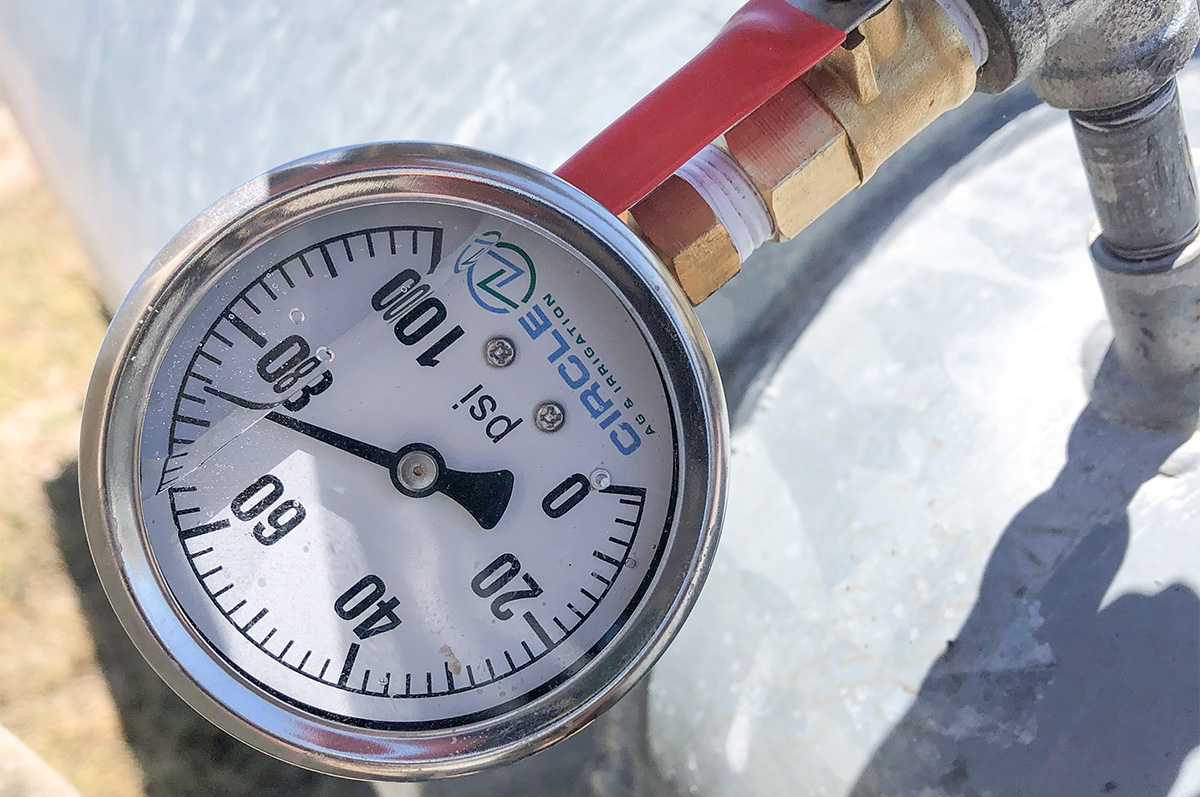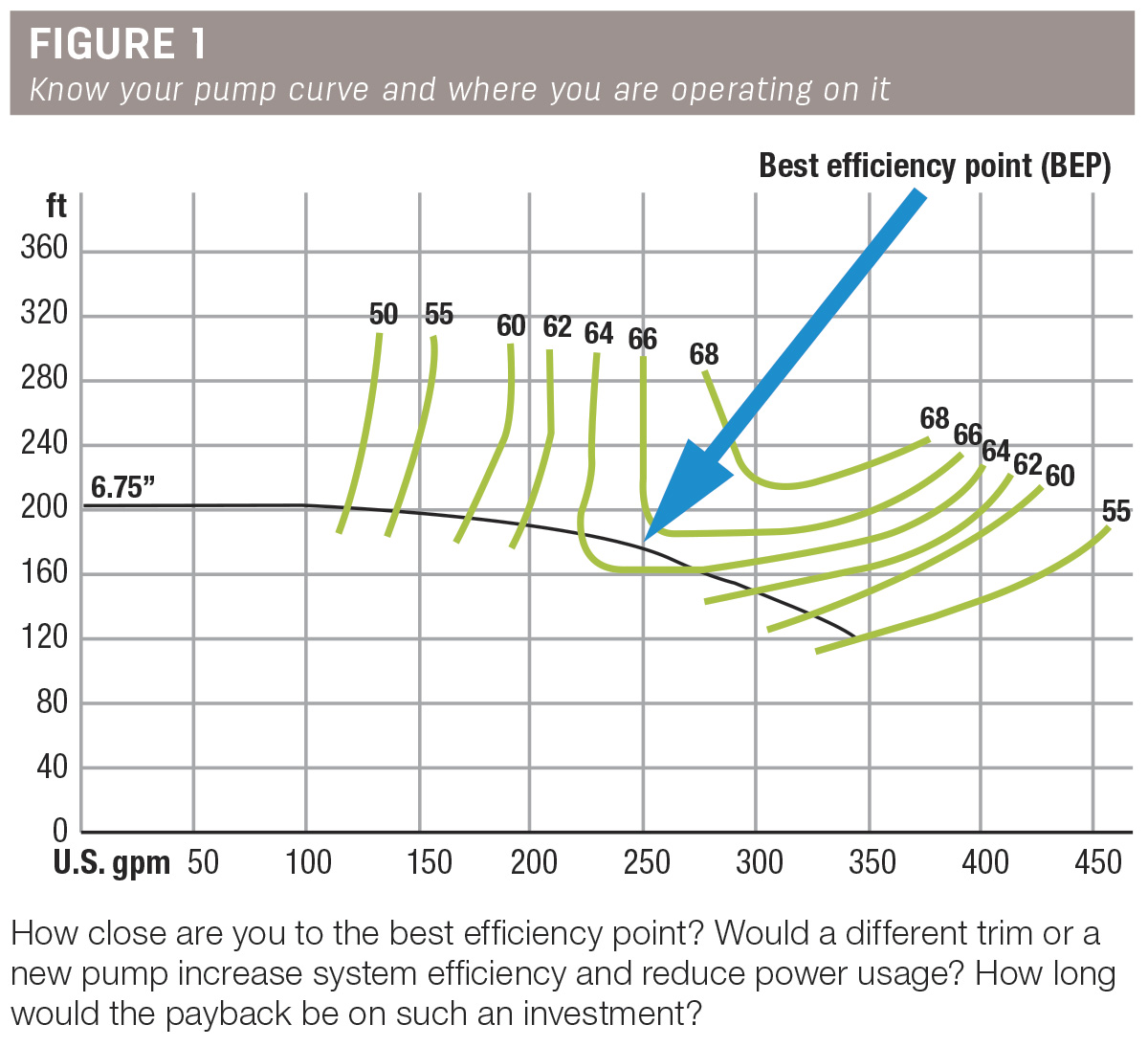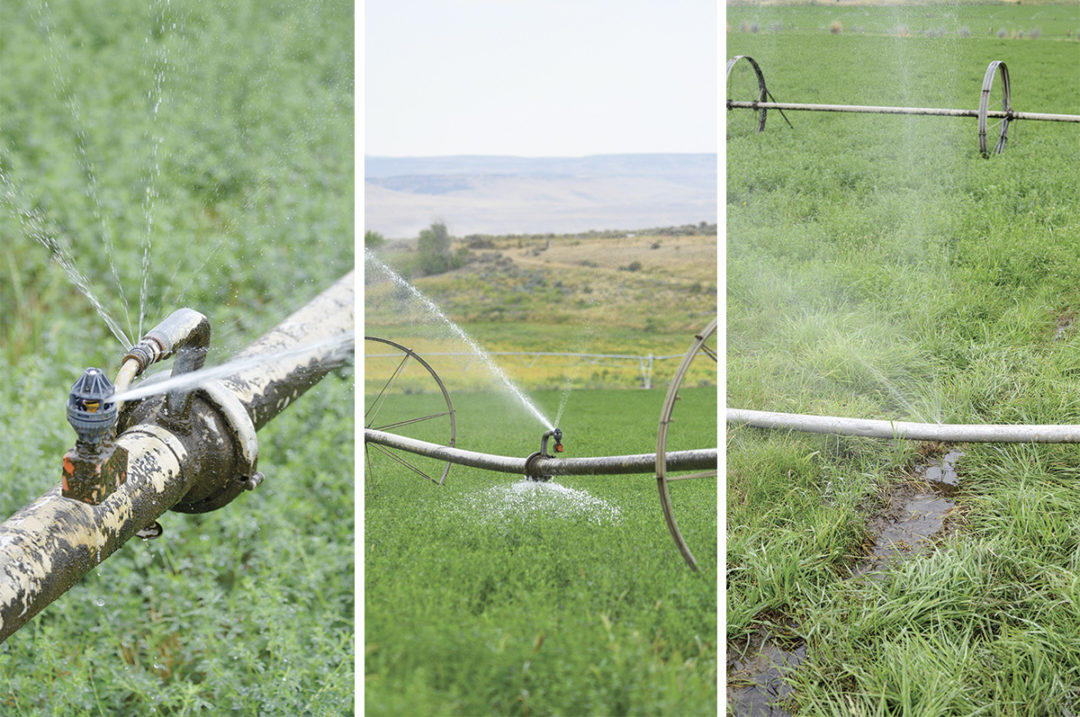Is your irrigation system as efficient as it could be? Irrigation pumps use a significant portion of total farm energy. Optimizing your irrigation system can lower energy costs, save water and improve water distribution across your fields. Idaho Power's agricultural representatives in southern Idaho and eastern Oregon offer valuable expertise on maximizing system efficiency. Whether you are installing a new system or considering upgrades to an existing one, our experience gives us broad insight into how anyone can save energy and money.
Where to start?
To kick-start efficiency improvements, conduct a quick "health checkup" on your system. This provides essential information for making beneficial changes.
Look at the energy (kWh) use and the demand (kW) of your system. Energy (kWh) is the amount of energy or volume consumed over a given time (hours), while demand (kW) is the capacity or rate at which energy is delivered to your system. The demand reading on your bill should be about 80% of your connected horsepower. If other loads, such as pivots, are connected to the meter, the demand still should be at 80%. If energy use is higher, keep in mind that a gradual increase in energy use with no system changes could indicate one or more of these: worn nozzles, leaks, worn motor bearings or pump wear. Also, a sudden demand increase could indicate leaks or pump problems.

A good pressure gauge can tell you a lot about the health of your irrigation system. Photo courtesy of Idaho Power.
A reliable pressure gauge, like an oil- or glycerin-filled one, provides valuable insights into your system's health. You can compare current discharge pressure with previous measurements, and if it matches or closely aligns with the original design pressure, your pump is probably working well. A sudden pressure fluctuation may signal issues like a clogged suction screen or mainline blowout, and a gradual pressure decrease could indicate pump wear, worn nozzles or system changes. Consider installing a ball valve on the riser to extend the gauge life and allow removal during the winter.
Lastly, look for variations across crops, such as different heights, colors or "rings" in a circle or field under a pivot. These variations can point to potential application uniformity issues.
Six considerations for increasing irrigation efficiency and reducing energy consumption
- Know your soil.
- What class (texture) is my soil?
- What is my soil infiltration rate or water-holding capacity?
- When was a soil test taken?
- Do I use the shovel method to determine soil moisture, or do I have moisture probes?
- Know your crops.
- What is my crop rotation? Which crop requires the most water?
- What is my crop’s rooting depth?
- What are my crop’s evapotranspiration rate and water application requirements?
- Know your irrigation system.
- Is my system high-pressure (hand lines, wheel lines), low-pressure (center pivots) or a combination?
- What is the needed pressure for my system, and do I have more than required?
- What is my pump designed to do (operating pressure and flow) and at that setpoint; what is its pumping efficiency?
- Is it sized correctly for my current system? Do I know my pump curve?
- Is my mainline undersized, causing excessive friction loss and increased pressure requirements at the pump? Would multiple pumps provide more efficient energy use?
- Is my system a good candidate for a variable-frequency drive (VFD)?
- Consider using a VFD.
- A VFD adjusts the speed of an AC motor by varying the frequency and voltage supplied. It uses controls to reduce inrush current. A VFD allows for precise control – adjustment of the operating or discharge pressure of the pump to match the best efficiency point on the pump's performance curve. It’s crucial to note that while a VFD offers efficiency, it can increase energy use if not correctly applied or utilized. Prime candidates for VFDs include systems with multiple crops, high/low pressure systems, variable flow ranges below max flow rate and multiple pumps.
- Know how much it costs to run your system and make changes if needed.
- An increase or decrease in flow/pressure affects pump efficiency. A 5% increase in pump efficiency on a pivot operating at 900 gallons per minute at 130 feet of head (56 psi) will decrease power costs by about $250 per year.
- Look into Idaho Power programs to help improve irrigation efficiency.

Idaho Power’s Irrigation Efficiency Rewards program
If your irrigation system needs repairs or upgrades, Idaho Power offers two options, custom and menu, that customers can use to receive a cash incentive and lower their energy bills.
Custom option
The custom option pays an incentive for upgrades to new or existing systems based on an estimated annual reduction in energy use. For existing systems, the incentive is based on energy savings estimated by Idaho Power of your proposed modifications. For a new system, the incentive is based on the installation of a system Idaho Power determines to be more energy efficient than standard.
Menu option
The menu option pays an incentive for purchasing specific replacement parts and components for your existing irrigation system. The incentive varies by the sprinkler component or part incorporated into your sprinkler system. You simply buy the new or refurbished components and submit an application, with invoices, within one year of the purchase date.
Visit Idaho Power's website for a complete list of eligible components and their associated incentives.

Idaho Power’s local ag reps can help you operate your irrigation system at the highest efficiency level possible. Photo courtesy of Idaho Power.
Not sure what’s right for you?
Idaho Power's ag reps specialize in assisting irrigation customers with their energy goals. Our experienced team offers free system audits for Idaho Power customers’ service points. With the information gathered, we can provide recommendations to improve pumping plant efficiency, water application and potentially reduce electrical costs while maximizing water usage.
Contact the ag rep nearest you for additional information, or visit Idaho Power's website to learn about other money-saving program offerings, including Irrigation Peak Rewards and the Green Motors Initiative.








